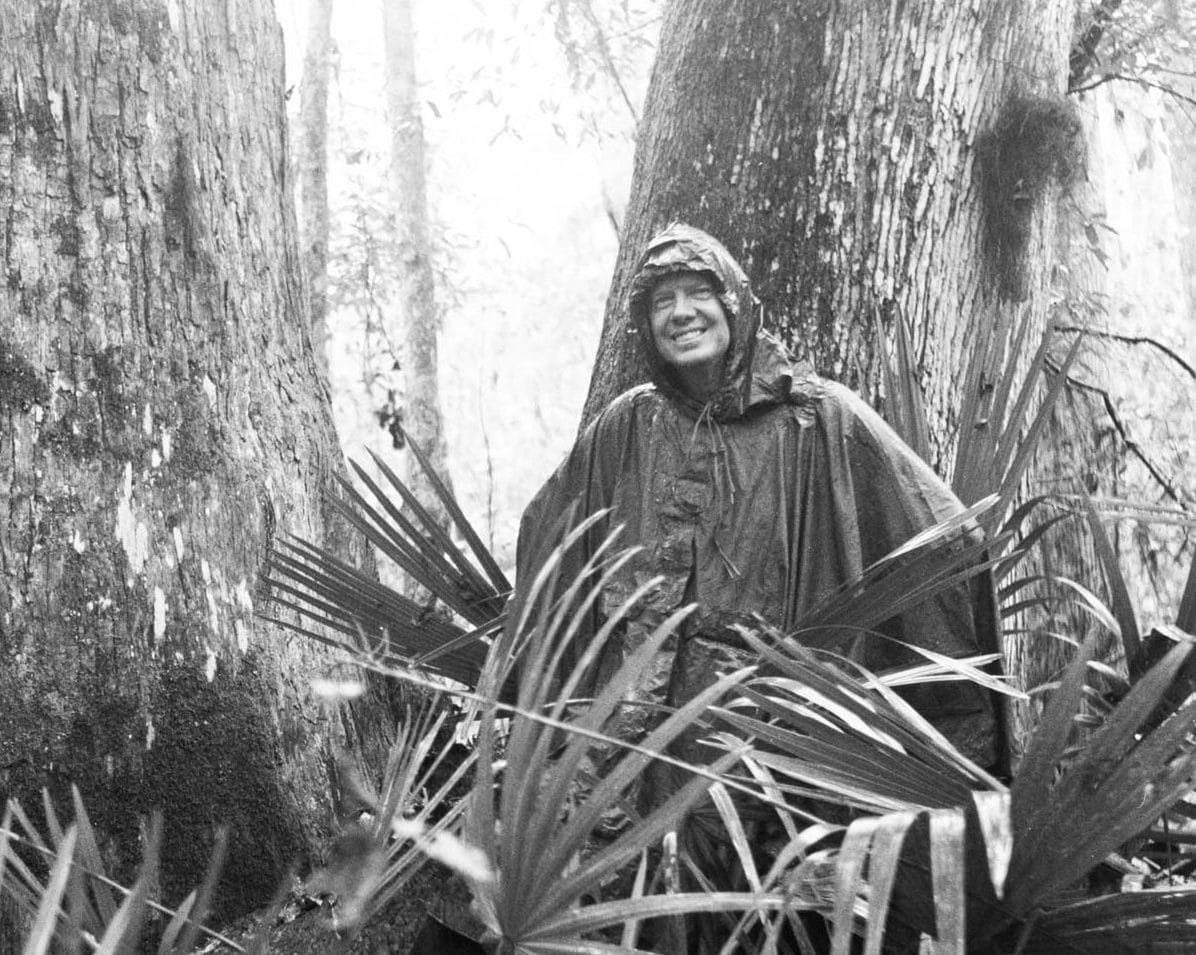
Article Summary: Best Conservation Presidents
Over the course of our history, the United States has been blessed with a number of visionary presidents who have risen to protect and preserve the nation’s bountiful natural treasures. These remarkable individuals, referred to here as the conservation presidents, have left an enduring legacy, ensuring that future generations can marvel at the wonders of America’s environment.
In this article, we proudly celebrate the top 10 greatest conservation presidents, whose unwavering dedication and tangible contributions have safeguarded our nation’s pristine landscapes and wildlife. From establishing iconic national parks to championing crucial environmental legislation, these leaders have left an indelible mark on our nation’s natural heritage.
Best Conservation Presidents
Table of Contents: Best Conservation Presidents
Criteria for Determining the Greatest Conservation Presidents
Determining the ranking of these esteemed conservation presidents hinges on their tangible efforts towards environmental protection.
Icons like Theodore Roosevelt, whose visionary use of the Antiquities Act paved the way for safeguarding our nation’s natural wonders, hold a prominent place on this list.
Additionally, legislative milestones, such as the trailblazing Clean Air Act championed by President Lyndon B. Johnson and the groundbreaking Endangered Species Act initiated by Richard Nixon, will be duly recognized.
Other considerations like their ability to ignite environmental consciousness in the hearts of the American people will also be celebrated.
Presidents who rallied the nation around the importance of sustainability and clean energy, like Jimmy Carter during the energy crisis (not to mention the Alaska achievements!), will earn their positions on this revered roster.
Join us as we delve into the lives and accomplishments of these exceptional leaders, paying homage to their unwavering dedication in preserving the natural splendor that defines the true essence of America.
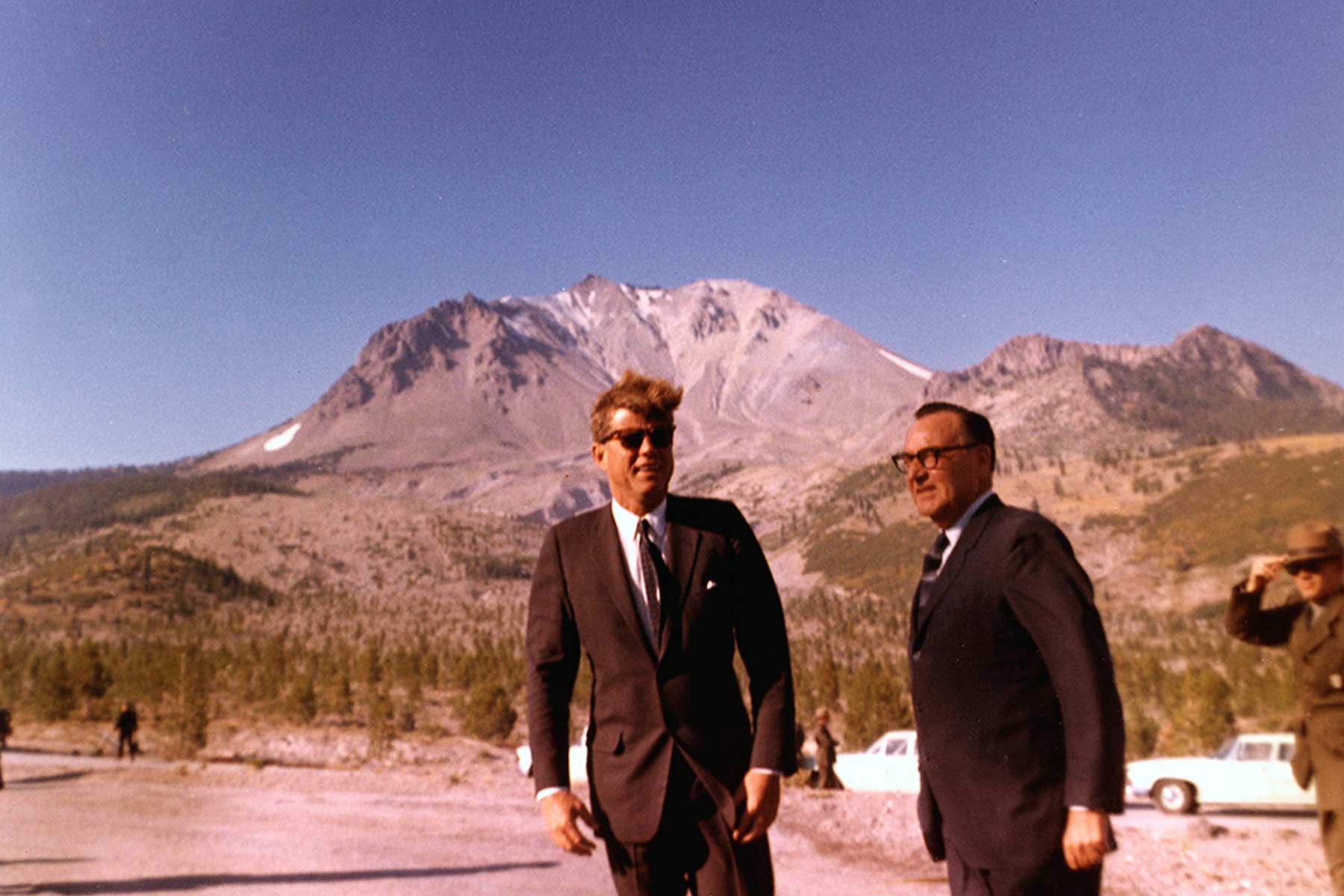
This article is another important part of More Than Just Parks Environmental Heroes Series
Top 10 Best Conservation Presidents
10. Ulysses S. Grant
We begin our countdown of the Top 10 Conservation Presidents at #10 with a man whom Theodore Roosevelt once referred to as the “Father of the National Parks.”
The man who gave America its first national park was a Republican President. President Ulysses S. Grant played a significant role in the conservation and establishment of the first national park in the United States, Yellowstone National Park.
In 1871, Congress allocated $40,000 to finance an expedition led by the U.S. Geological Survey to explore the relatively unknown area of Yellowstone. The expedition brought back valuable information about the region and included 3D stereographic images of the stunning landscape.
Based on the findings of the expedition, President Grant signed the Yellowstone National Park Protection Act on March 1, 1872, officially establishing Yellowstone as the first national park in the world.
This historic step marked the beginning of the concept of national parks, which aimed to preserve natural wonders and provide public enjoyment and appreciation of these wonderful areas.
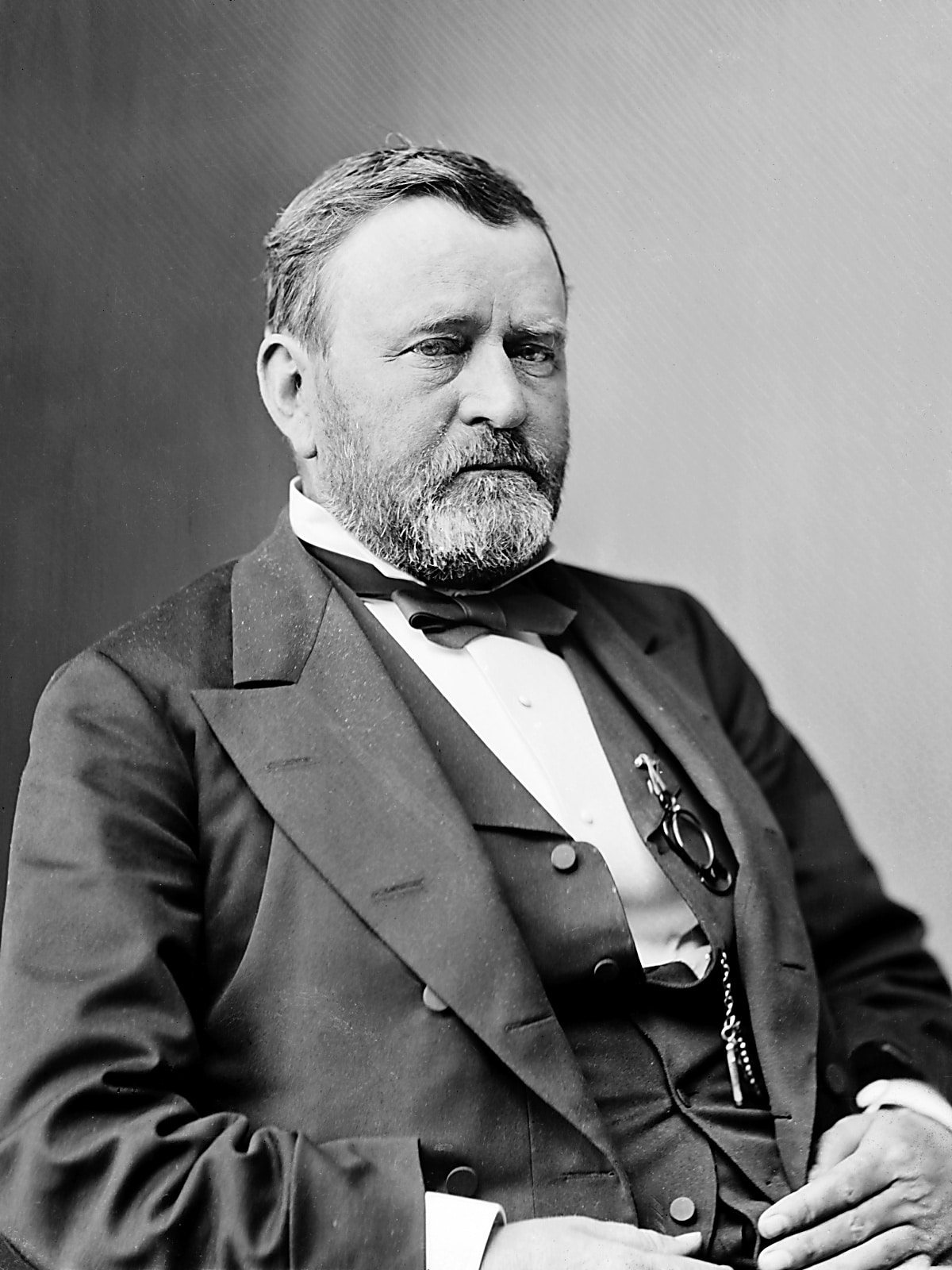
Grant’s Conservation Efforts Extended Beyond National Parks
Moreover, President Grant’s conservation efforts extended beyond America’s national parks. In 1868, he designated the Pribilof Islands in Alaska as a reserve for the northern fur seal. These seals had been heavily over-hunted for their valuable pelts, leading to a dramatic decline in their population.
Grant’s action marked one of the first instances of protecting marine mammals and recognizing the importance of preserving their habitats.
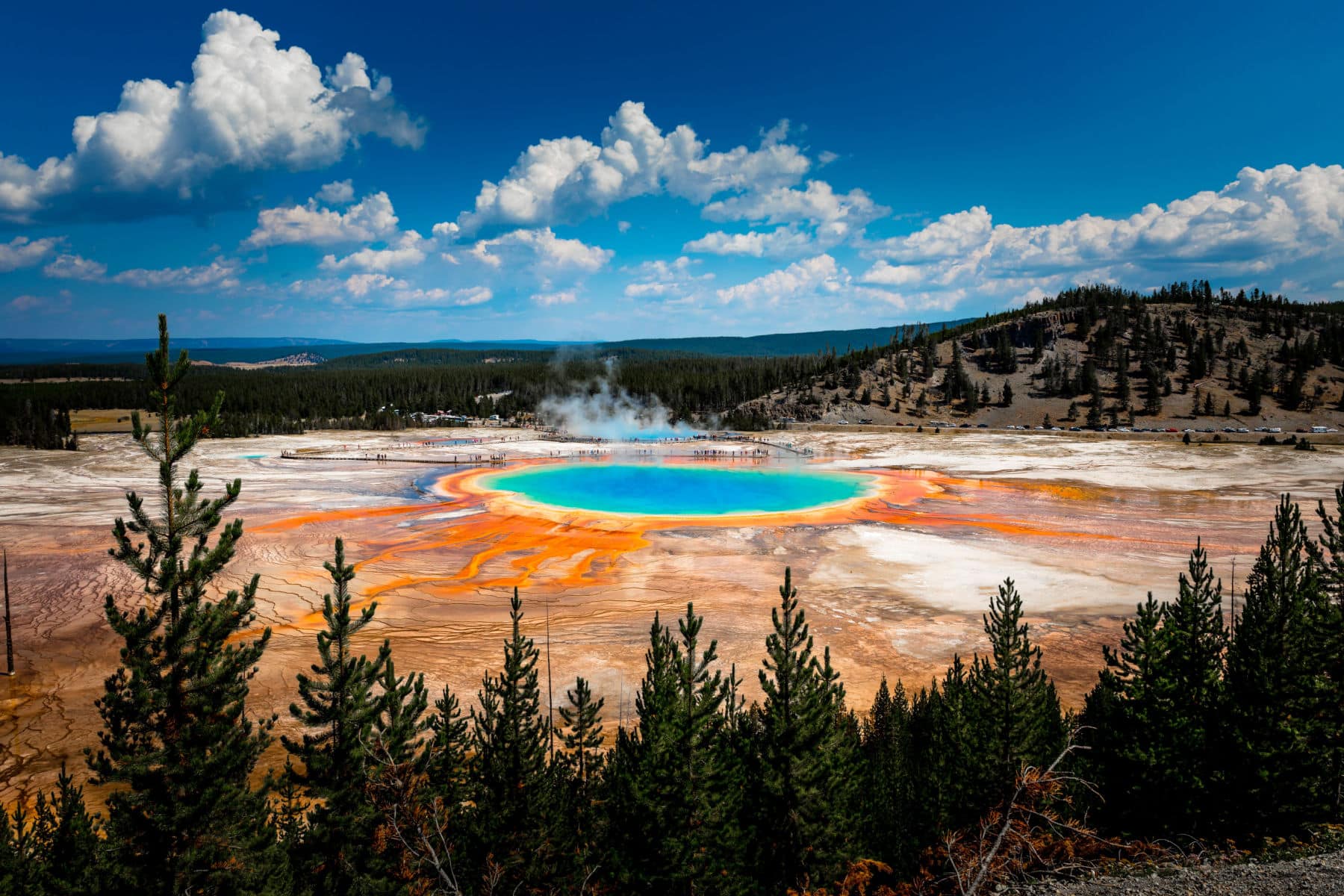
9. Bill Clinton
At #9 on our list of the Top 10 Conservation Presidents is America’s 42nd President – William Jefferson Clinton.
During Bill Clinton’s administration, there were significant efforts to protect public lands and expand national monuments. Some of the notable national monuments that were either expanded or added to the register during his time include:
- Grand Staircase-Escalante National Monument (Utah)
- Pinnacles National Monument (now Pinnacles National Park, California)
- Giant Sequoia National Monument (California)
The Clinton Administration protected nearly 27 million acres of public lands through the establishment and expansion of national monuments.

The Roadless Rule
Near the end of his time in office, Clinton instituted the “Roadless Rule.” This rule aimed to protect approximately one-third of the national forests in the United States from road construction, development and logging.
The Roadless Rule was designed to preserve the pristine nature of these areas and ensure their conservation for future generations.
Despite facing opposition from anti-conservation interests, the Roadless Rule has been supported and upheld by several high-profile court decisions. These legal victories have helped to maintain the protections afforded to the roadless areas within America’s national forests
The conservation efforts undertaken during Bill Clinton’s administration have played a crucial role in preserving some of America’s most valuable and ecologically significant lands for the enjoyment and benefit of present and future generations.

8. Woodrow Wilson
At #8 on our list is a man who is not typically considered one of America’s Greatest Conservation Presidents. This is, in part, because he signed the legislation creating the controversial Hetch Hetchy Dam.
Nevertheless, Woodrow Wilson was also the man who created the National Park System. And, his conservation achievements don’t stop there either.

Wilson Designated Several National Monuments
One of President Wilson’s most notable achievements was the designation of several national monuments. He designated more national monuments than almost all other presidents, with only three other presidents surpassing his impressive numbers.
One of these iconic national monuments was Dinosaur National Monument, located between Utah and Colorado. This area contains valuable fossil resources and stunning landscapes, making it an important site for preservation.

Wilson Created the National Park Service
Furthermore, as noted earlier, Wilson signed the act that created the National Park Service in 1916. This landmark legislation allowed for the centralized management of existing and future national parks and monuments.
The National Park Service has since played a vital role in preserving and protecting some of America’s most treasured natural and cultural landmarks.
In addition to national monuments, Woodrow Wilson’s administration also established several new national forests. These forest designations helped conserve vast expanses of wilderness and provided protection for important ecosystems.
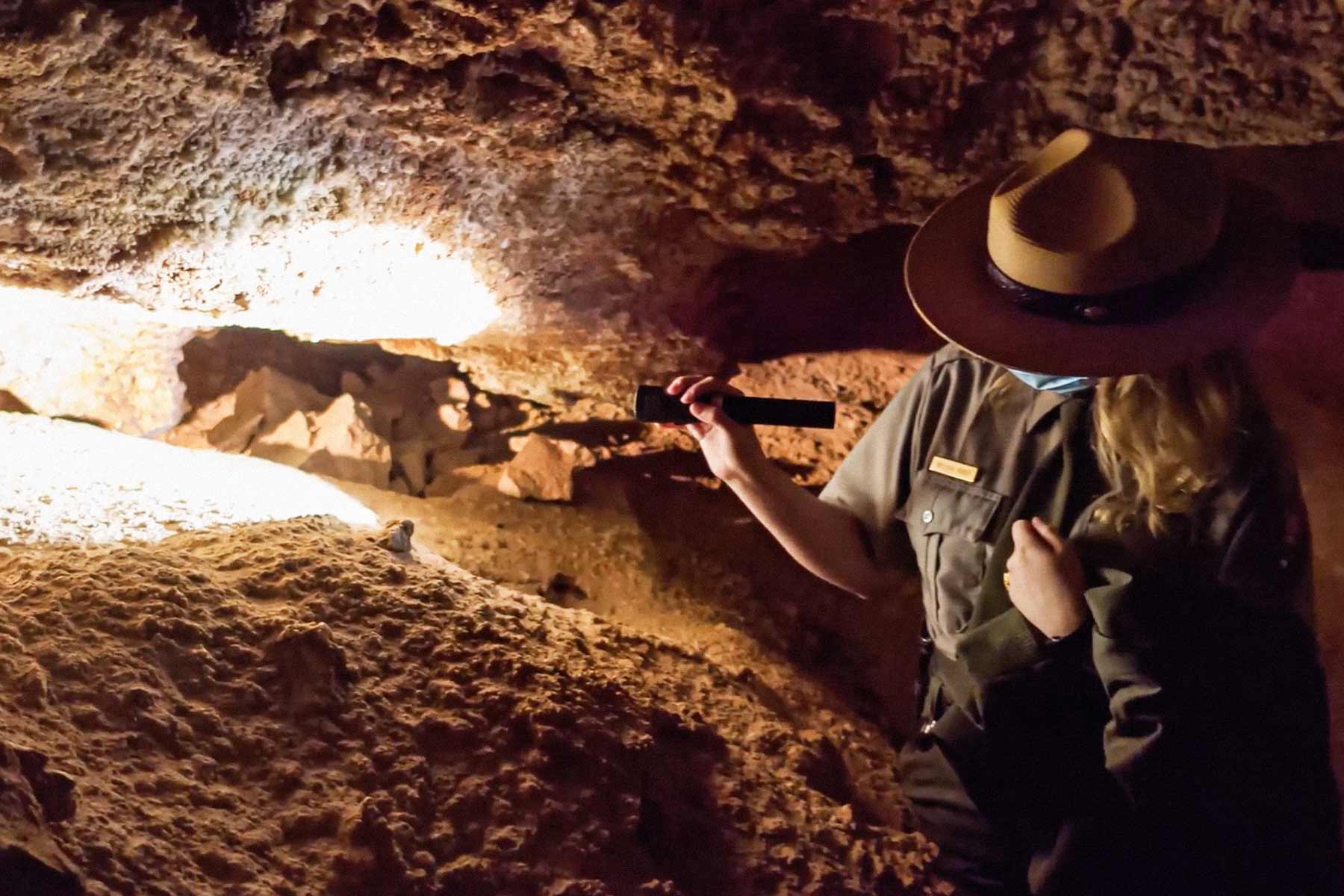
Wilson’s Administration Oversaw The Creation Of New National Parks Too
Wilson’s administration oversaw the creation of several new national parks. Among these were Grand Canyon National Park, which was previously designated as a forest reserve and national monument, and Rocky Mountain National Park in Colorado.
Furthermore, his administration played a significant role in the establishment of Mount McKinley National Park (now referred to as Denali) in Alaska, which was the first national park in that state.
Woodrow Wilson’s efforts in wilderness preservation and the establishment of national parks and monuments have left a lasting legacy in America’s conservation history. These protected areas continue to be cherished and visited by millions of people from around the world.
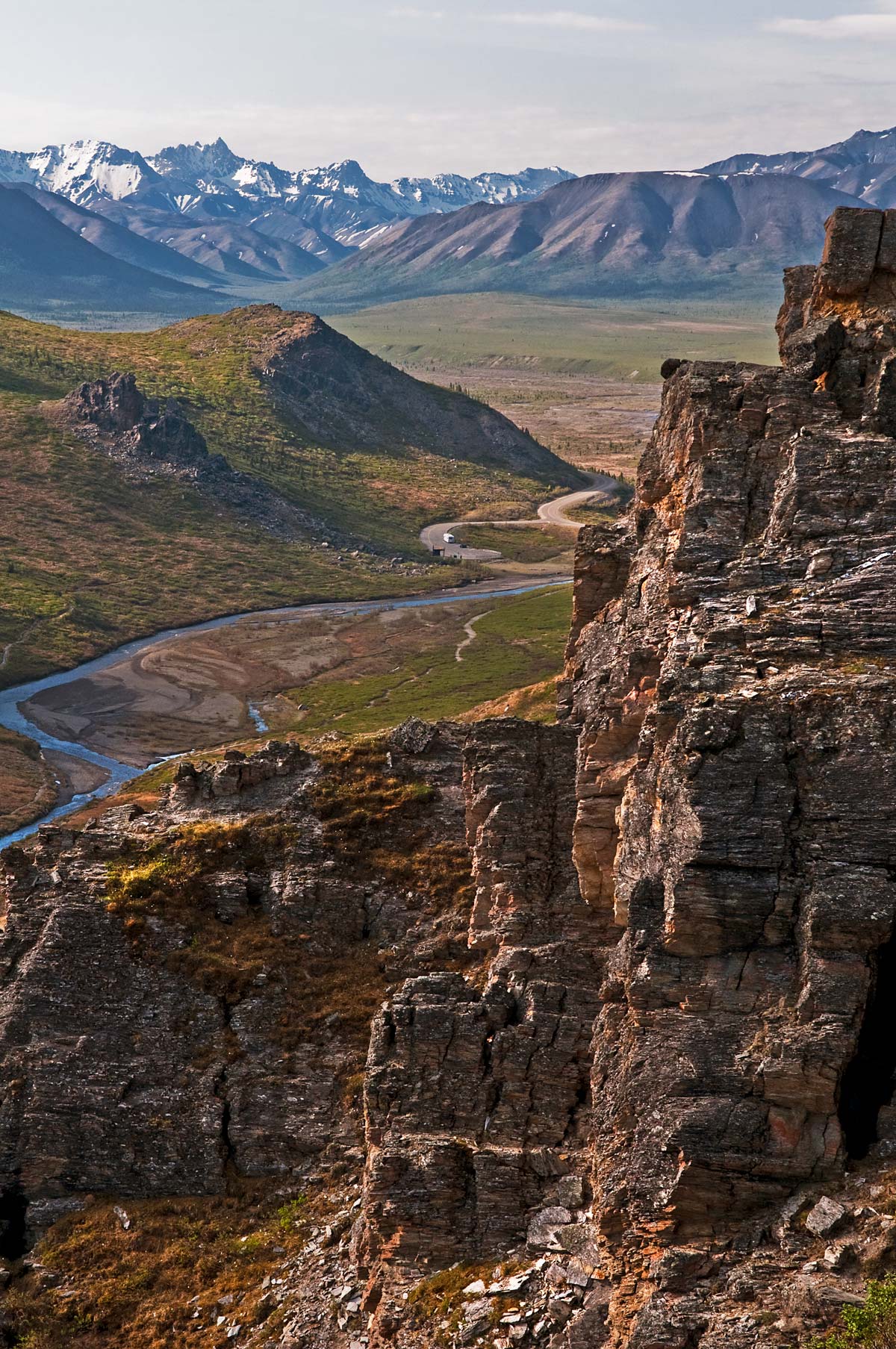
7. John F. Kennedy
At #7 on our list of the Top 10 Conservation Presidents is a man who once famously said, “Ask not what your country can do for you. Ask what you can do for your country.”
John F. Kennedy left a lasting conservation legacy despite his relatively short time in office. He demonstrated a strong commitment to environmental protection and conservation, and some of his ideas were ahead of their time.
One of his notable contributions was the establishment of Delaware’s Prime Hook National Wildlife Refuge.
This action was taken under the authority of the Migratory Bird Conservation Act. It showcased Kennedy’s willingness to use the power of his office to advance conservation efforts, even when facing opposition from state officials.

When It Came To Conservation, Kennedy Had Forward-Thinking Ideas
President Kennedy’s forward-thinking ideas included advocating for a Youth Conservation Corps. He spoke about the need to preserve forests, stock lakes and rivers, clear streams, and protect America’s natural resources.
His vision for engaging young people in conservation work was realized years later with the establishment of the Youth Conservation Corps, a program that has provided opportunities for young individuals to contribute to the protection and enhancement of public lands.
Land & Water Conservation Fund
In the final year of his presidency, Kennedy proposed legislation to establish the Land and Water Conservation Fund (LWCF). This visionary program aimed to reinvest a portion of royalties from offshore oil and gas leases into public lands conservation.
The LWCF has since supported tens of thousands of park projects and protected millions of acres of land across the United States, including iconic places like Cape Cod National Seashore, which is beloved by the Kennedy family.
Though his time in office was tragically cut short, John F. Kennedy’s commitment to conservation and his efforts to protect natural resources have had a lasting impact on the nation’s environmental policies and the preservation of its treasured landscapes for future generations.
6. Barack Obama
At #6 on More Than Just Parks list of the Top 10 Conservation Presidents is a man whose administration made remarkable strides in protecting public lands, waters, and cultural sites, as well as addressing the urgent threat of climate change – Barack Obama.
The establishment of national monuments such as Gold Butte in Nevada and Bears Ears in Utah, along with the expansion of California Coastal and Cascade-Siskiyou national monuments, demonstrated President Obama’s commitment to safeguarding wild landscapes and preserving important cultural and historical sites.

He Showed A Dedication To Diversifying Parks & Public Lands
President Obama also showed a dedication to diversifying parks and public lands by recognizing the contributions of underrepresented groups.
His designation of the first monument dedicated to LGBTQ rights, as well as monuments honoring the civil rights, labor, and women’s suffrage movements, highlighted the significance of these social justice movements in American history.
President Obama & Climate Change
In the face of climate change, President Obama took bold actions to address greenhouse gas emissions and promote clean energy.
Committing the U.S. to the Paris Climate Accord, implementing the Clean Power Plan, and reducing methane pollution from oil and gas operations on public lands were all critical steps in combating climate change and transitioning towards a more sustainable future.
Furthermore, President Obama made important decisions to protect ecologically sensitive areas from harmful oil and gas drilling. Cancelling oil and gas leases in places like the Badger-Two Medicine area, Colorado’s Roan Plateau, and Thompson Divide, as well as blocking new drilling in parts of the Arctic Ocean, demonstrated a commitment to conserving these “Too Wild to Drill” locations.

Every Kid In A Park
Barack Obama’s Every Kid in a Park initiative aimed to connect young Americans with nature and foster a sense of environmental stewardship by providing free access to national parks and federal lands for fourth-grade students and their families
President Barack Obama’s dedication to environmental conservation and climate action has left a significant and lasting impact on the nation’s efforts to protect its natural heritage and combat the challenges of a changing climate.
The President Who Visited The Most National Parks
Believe it or not, President Obama visited more national parks than any other President of the United States.
Obama visited 30 national parks during his presidency, lending the spotlight of his office to a National Parks Service campaign to encourage Americans to “Find Your Park.”
His visits included some of America’s best-known and most-visited natural wonders: Yellowstone, the Grand Canyon and the Everglades.
Others are among the 23 national monuments he’s dedicated during his presidency, like the Cesar Chavez National Monument in California and the Pullman National Monument in Chicago.

Top 5 Best Conservation Presidents
5. Lyndon B. Johnson
We’re on to our Top 5 Conservation Presidents. And, at #5, is a man who some believe possessed the strongest environment track record – Lyndon Baines Johnson.
In his article, How the White House Went Green, author Adrian Benepe writes, “Lyndon Johnson signed more than 300 conservation measures into law. These measures established the legal foundations for how we protect the nation’s land, water and air.”
Environmental historian Martin V. Melosi refers to the Johnson administration as “a transitional force in the evolution from old-style conservation to modern environmentalism.”
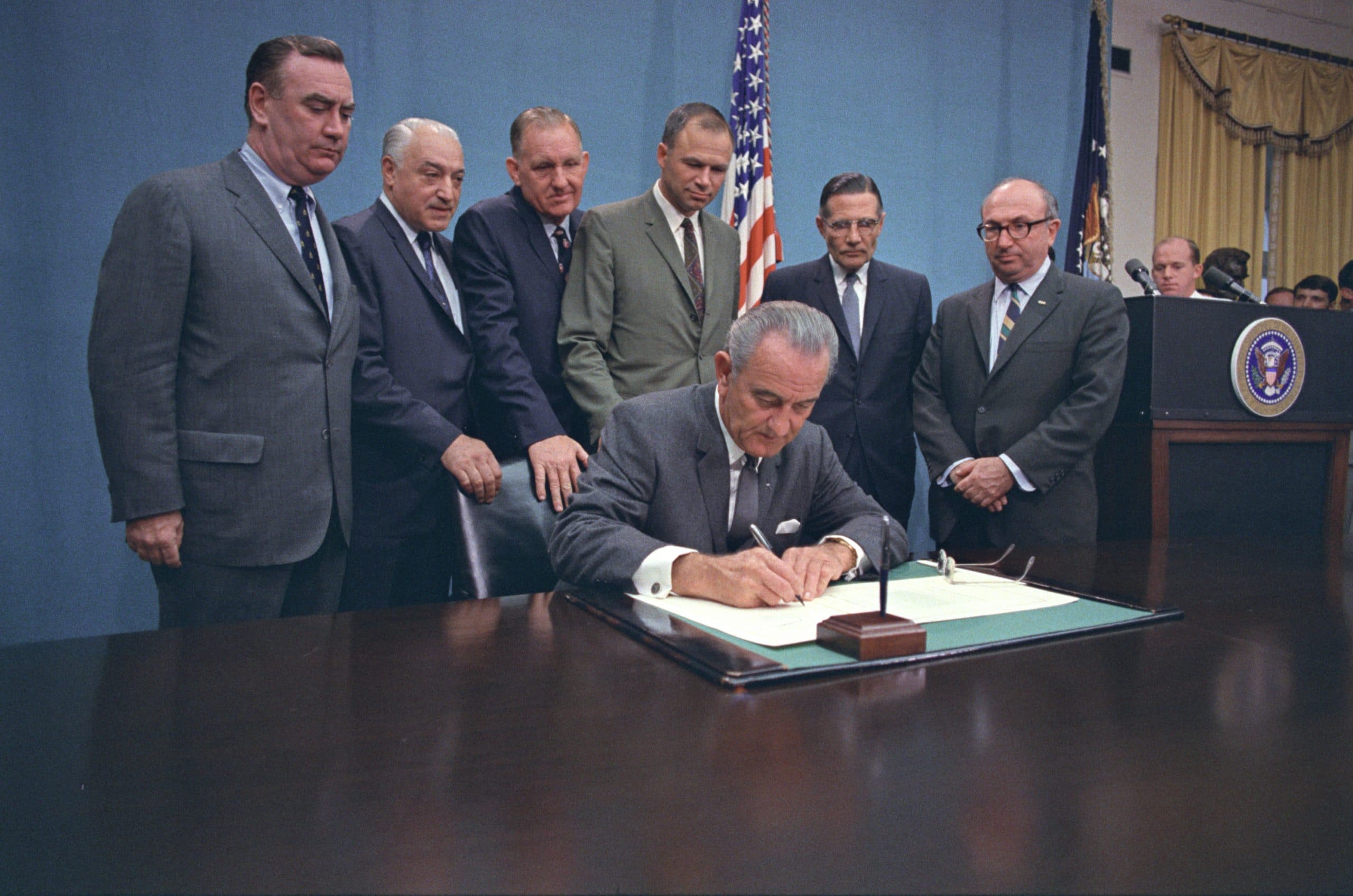
We will seek legal power to prevent pollution of our air and water before it happens. We will step up our effort to control harmful wastes, giving first priority to the cleanup of our most contaminated rivers. We will increase research to learn much more about the control of pollution.
-President Lyndon B. Johnson’s 1965 State Of The Union Address
A Strong Commitment To Conservation
Lyndon B. Johnson had a strong commitment to conservation and enacted several key pieces of legislation to protect and preserve the nation’s natural resources. Among the legislation which he produced are the following:
- Wilderness Act (1964): One of Johnson’s major achievements was signing the Wilderness Act into law in 1964. This landmark legislation established the National Wilderness Preservation System and provided a framework for protecting and preserving designated wilderness areas. The act immediately protected 9 million acres of wild American lands, and over the years, an additional 100 million acres have been safeguarded under this law.
- National Trails System Act (1968): Johnson also played a crucial role in establishing the National Trails System. This act authorized the creation of long-distance scenic trails, historical trails, and recreation trails across the country, promoting outdoor recreation and providing opportunities for Americans to connect with nature and their historical heritage.
- Endangered Species Preservation Act (1966): Recognizing the importance of protecting endangered species, President Johnson signed the Endangered Species Preservation Act into law in 1966. This act laid the foundation for subsequent legislation focused on the conservation and recovery of endangered and threatened species.
- Land and Water Conservation Fund (LWCF) Act: While this act was initially proposed by President John F. Kennedy, it was signed into law by President Johnson in 1965. The LWCF Act authorized a fund to support the acquisition and protection of lands for national parks, wildlife refuges, forests, and other public lands.

A Profound Appreciation For The Land
Lyndon B. Johnson’s upbringing in the Scenic Texas Hill Country had a profound impact on his appreciation for nature and the land. The rural landscape of the Hill Country instilled in him a deep respect for the environment and an understanding of the importance of preserving natural resources.
His wife, Lady Bird Johnson, also shared this love for nature and the environment. As First Lady, Lady Bird Johnson was a passionate advocate for environmental conservation and beautification.
She was particularly concerned about the negative effects of industrialization and urban development on the environment and worked tirelessly to address these issues during her time in the White House.
The Johnsons recognized the changes happening in the country as it shifted from an agrarian society to a more industrialized nation. They were deeply concerned about the environmental challenges that came with this transformation, such as pollution, deforestation, and loss of natural habitats.
President Johnson’s administration, along with Lady Bird’s efforts, aimed to address some of these issues through various conservation and beautification initiatives.
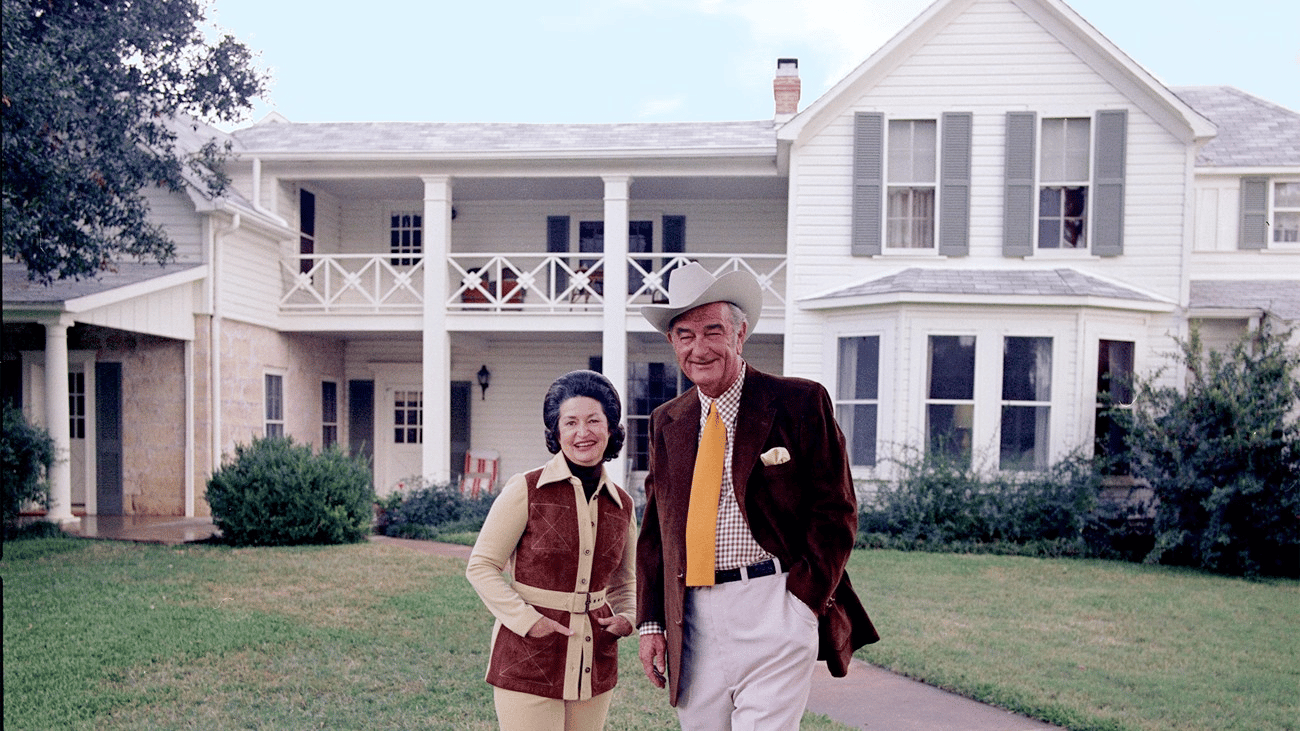
To Learn More About America’s Environmental First Lady, Check Out This Article From More Than Just Parks
4. Richard M. Nixon
Speaking of lists, the Defenders of Wildlife established their own list of presidents from both political parties who have been champions of conservation. Of the men who followed Theodore Roosevelt into the White House, only one Republican makes their list. His name is Richard M. Nixon. And he’s #4 on our list.
President Nixon’s environmental record is often surprising to many people, given the current political climate and the negative public perceptions of his administration. Despite being associated with controversial events, such as the Watergate scandal, Nixon made significant contributions to environmental policy during his presidency.
During his first State of the Union address in 1970, Richard Nixon declared the environment as the defining issue of the new decade and emphasized the need to address the damages done to the air, land, and water.
Following this commitment, his administration took several key steps to address environmental issues, which had a lasting impact on American environmental policy.
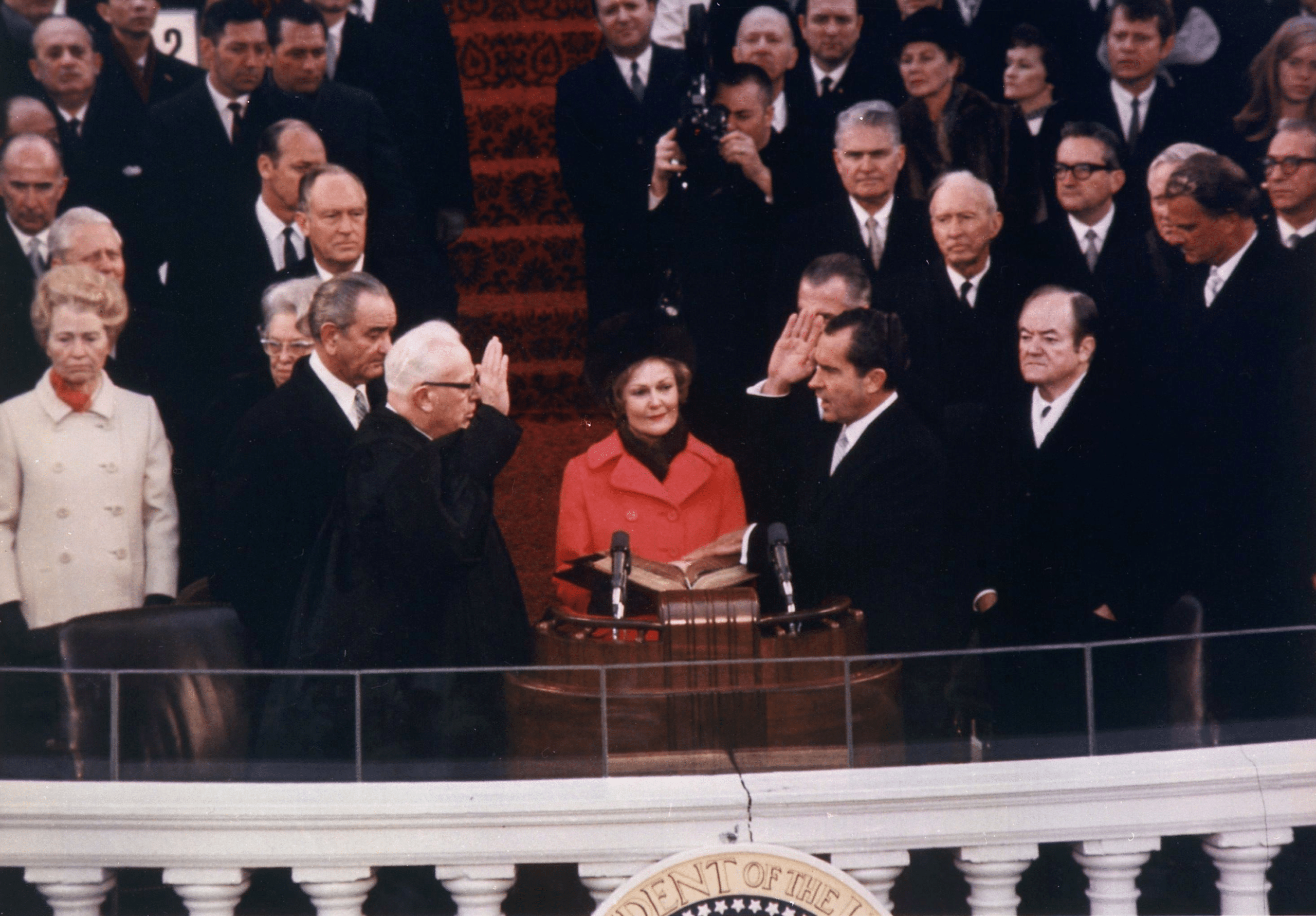
Learn More About Richard Nixon Conservation President
President Nixon’s Environmental Legacy
Here are some of the major environmental policies and initiatives that President Nixon initiated:
- National Environmental Policy Act (NEPA): Signed into law on January 1, 1970, NEPA requires federal agencies to consider the environmental impact of their actions and involve the public in decision-making processes related to major projects.
- Creation of the Environmental Protection Agency (EPA): The EPA was established in December 1970 to consolidate various federal environmental responsibilities into one agency. The EPA is tasked with enforcing environmental regulations and addressing environmental issues comprehensively.
- Clean Air Act of 1970: This landmark legislation aimed to control air pollution by setting emission standards for various pollutants and establishing requirements for state implementation plans.
- National Oceanic and Atmospheric Administration (NOAA): The NOAA was created in 1970 to focus on the management and conservation of marine and coastal resources and the study of the atmosphere and oceans.
- Endangered Species Act (ESA): Signed into law in December 1973, the ESA provides protection for threatened and endangered species and their habitats, aiming to prevent extinction and promote recovery efforts.
- Marine Mammal Protection Act (MMPA): Enacted in 1972, the MMPA protects marine mammals from being killed, captured, or harassed by humans and sets regulations for marine mammal conservation.
- Legacy of Parks program: This program was established to convert over 80,000 acres of government property into recreational use, creating 642 new parks for public enjoyment.
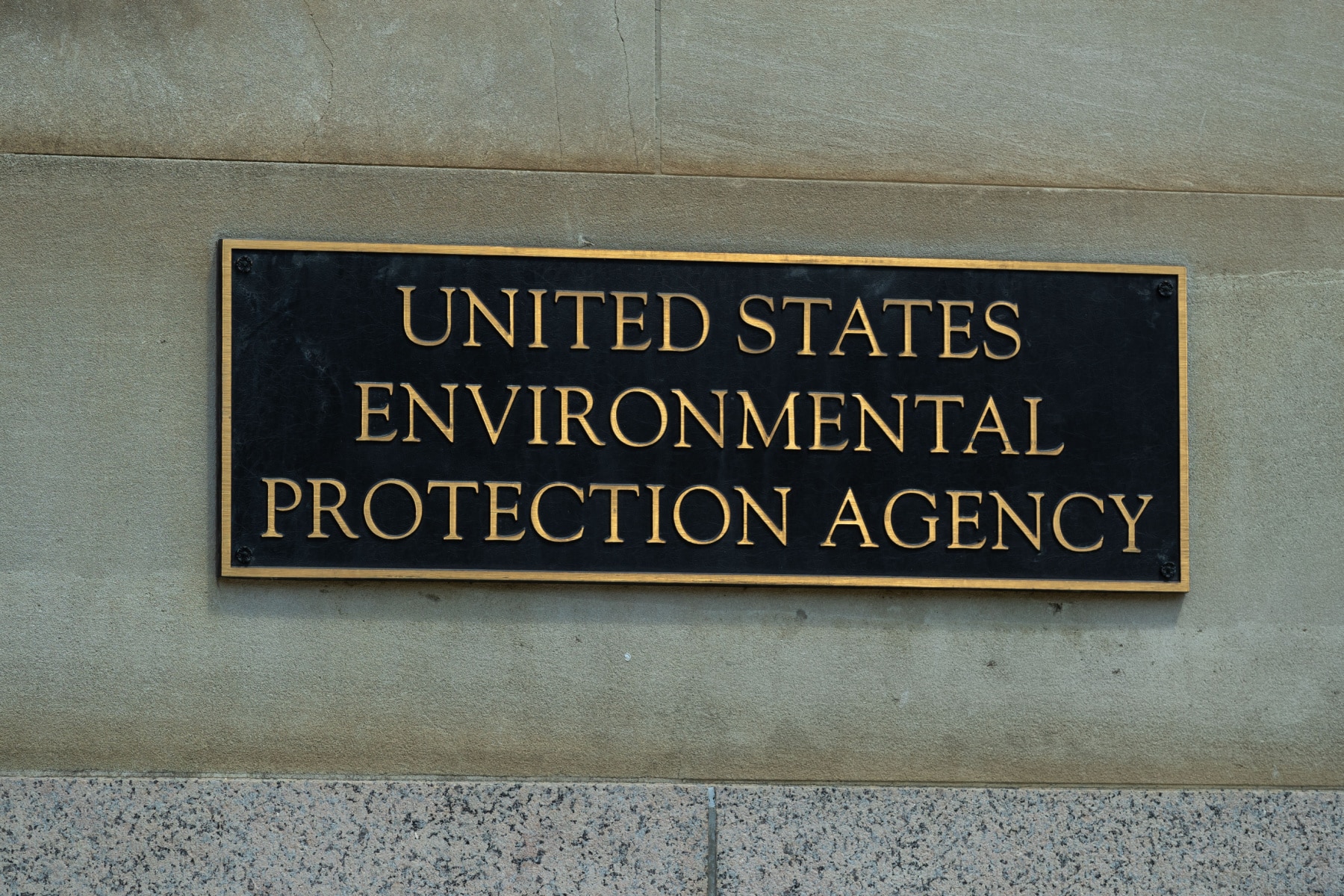
A Republican President Helped To Shape Environmental Governance
These environmental policies and initiatives helped shape modern environmental governance in the United States and demonstrated a commitment to addressing environmental challenges at a time when bipartisan support was achieved.
Nixon’s environmental legacy highlights the possibility of politicians finding common ground and working together on important issues such as protecting the environment for future generations.
According to Russell Train, 2nd EPA Administrator & President of the World Wildlife Fund, Environmental Protection represented the single most significant area of domestic policy accomplishment of the Nixon Administration.
“The great question of the Seventies is…shall we make our peace with nature and begin to make reparations for the damage we have done to our air, to our land, and to our water,”
-President Richard nixon
3. Franklin D. Roosevelt
We’re on to the final three. And, we’ve saved the best for last! Our final three Conservation Presidents all share one thing in common – a personal love of nature.
And, if there’s one name that means more than any other when it comes to presidential conservation efforts, it’s a name you’re likely to see often when it comes to conservation. That name is Roosevelt.
And while Franklin Delano Roosevelt doesn’t take a back seat to other presidents very often, he does take a back seat to his fifth cousin when it comes to More Than Just Parks list of the Top 10 Conservation Presidents.
Franklin D. Roosevelt, while not as closely associated with conservation as his cousin Theodore, indeed made significant contributions to the protection of public lands and natural resources during his time as President of the United States.

The Civilian Conservation Corps
FDR’s most prominent conservation accomplishment was the establishment of the Civilian Conservation Corps (CCC) as part of the New Deal.
The CCC was one of the earliest programs enacted during his presidency. It had a profound impact on the conservation and development of public lands.
The program employed millions of young men, providing them with work in building infrastructure and undertaking conservation projects in national parks and forests.
They planted billions of trees, constructed trails and facilities, and helped combat soil erosion on vast amounts of farmland, significantly improving the condition of many public lands.
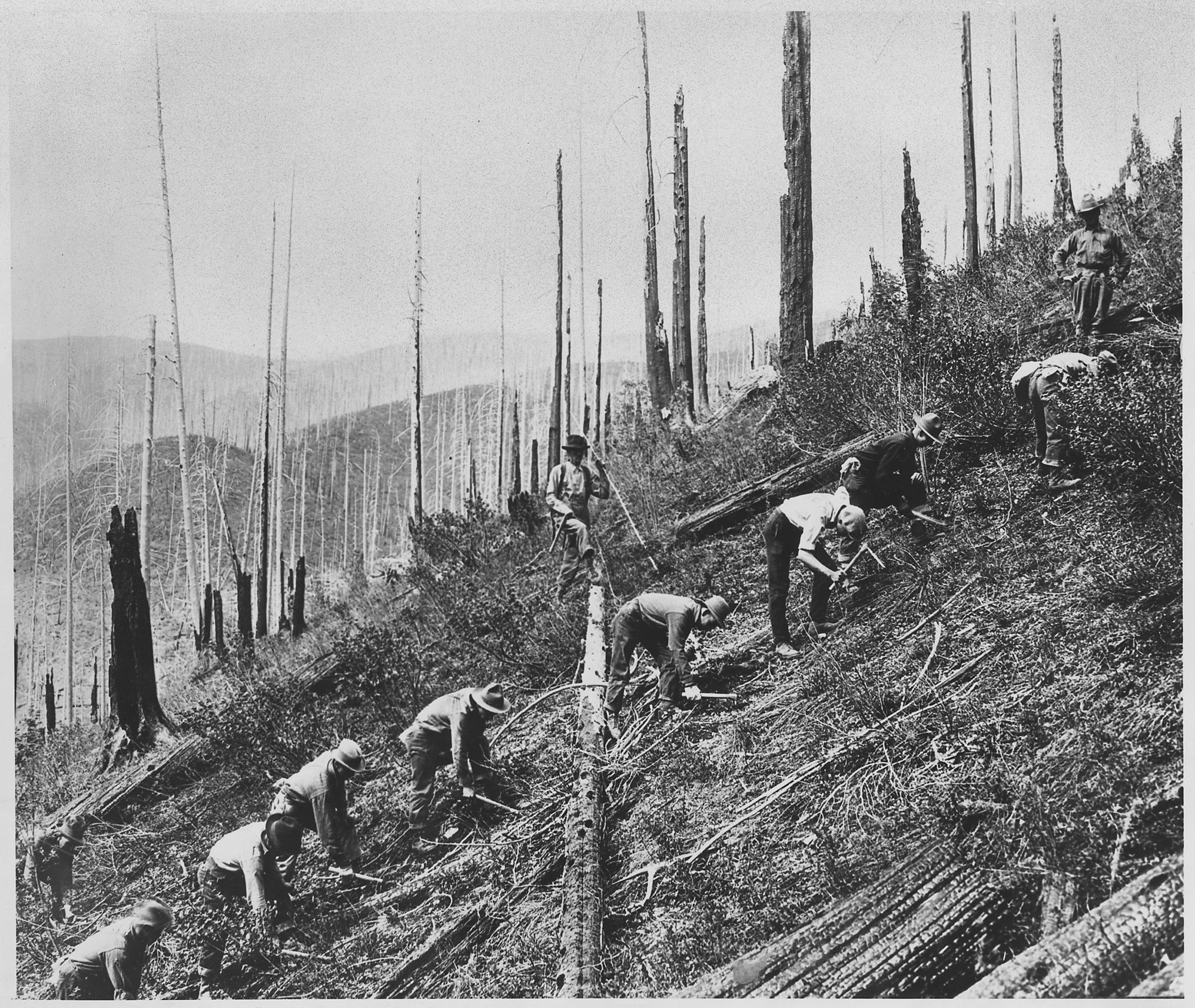
CHECK OUT: The First Green New Deal Happened Nearly 100 Years Ago – What Happened?
FDR Had A Personal Love Of Nature
FDR’s personal love for nature and wildlife also drove him to take executive actions to protect public lands, even in the face of resistance from Congress.
Utilizing the Antiquities Act, he expanded Dinosaur National Monument, which had originally been designated by Woodrow Wilson, and created Joshua Tree National Monument (later designated as Joshua Tree National Park) and ten other national monuments. These designations helped safeguard important natural and cultural sites for future generations.
Furthermore, Roosevelt’s exploration of the Washington peninsula led to the creation of Olympic National Park. Despite opposition from industrial interests, his decision to set aside the land for conservation and recreational use contributed to the preservation of the beautiful and ecologically significant mountainous region.
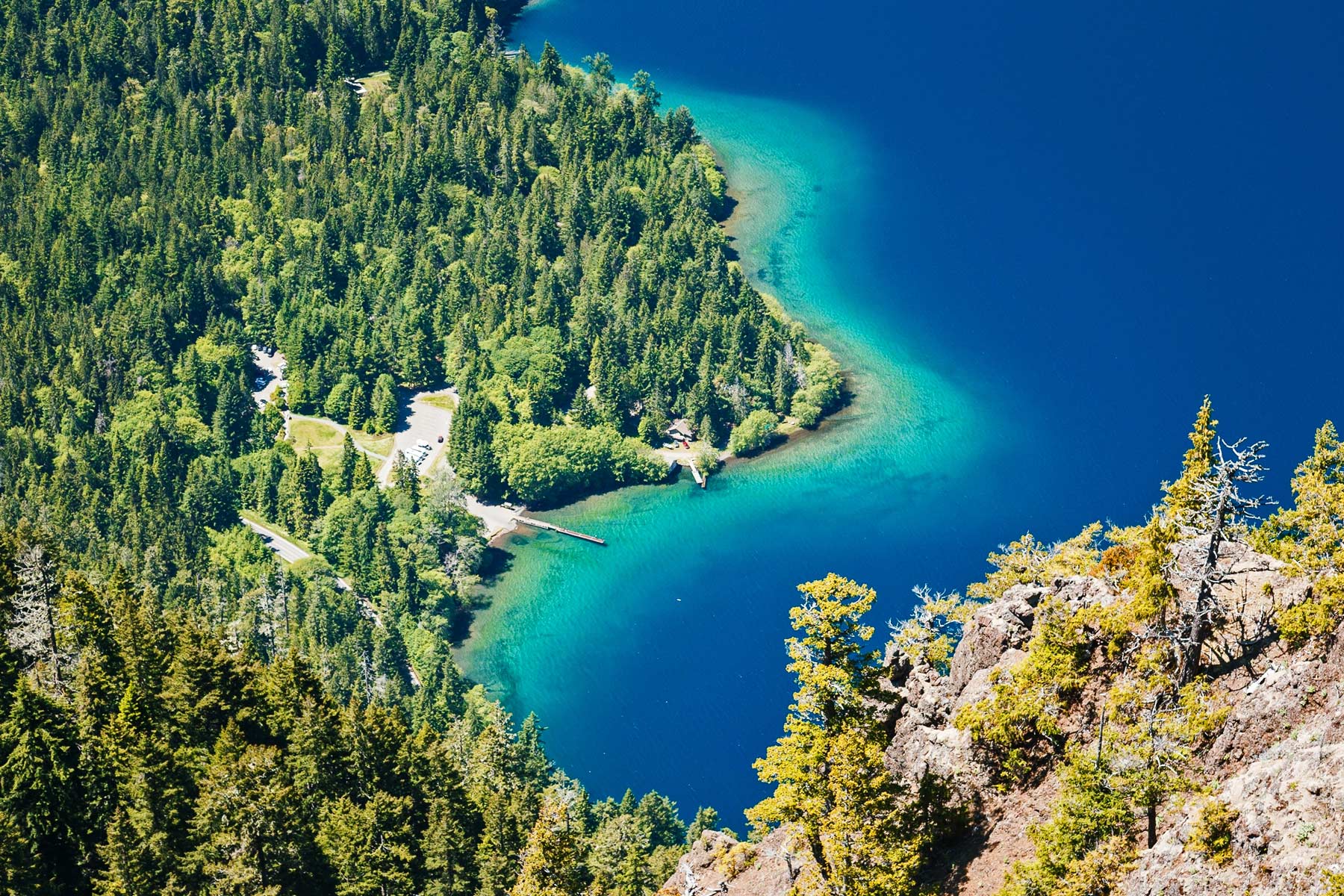
FDR Also Led The Way When It Came To Desegregation Of America’s Public Lands
Throughout his conservation initiatives, Franklin D. Roosevelt was supported by his Secretary of the Interior, Harold Ickes. Ickes played a crucial role in desegregating both the culture of the Interior Department and public lands in the American South. This move promoted a more inclusive and equitable approach to conservation efforts.
While not as prominently associated with conservation as Theodore Roosevelt, Franklin D. Roosevelt’s contributions to the protection of public lands through the CCC and his executive actions have earned him a place among the greatest champions of America’s natural heritage.
His efforts have provided generations of Americans with access to and enjoyment of the country’s beautiful and ecologically significant public lands.
2. Theodore Roosevelt
Theodore Roosevelt’s conservation legacy is both profound and enduring, making him one of the most significant figures in American conservation history. He’s #2 on More Than Just Parks list of the Top 10 Conservation Presidents.
As the 26th President of the United States, serving from 1901 to 1909, Roosevelt left a remarkable impact on environmental protection and natural resource conservation.
Roosevelt was the first President to truly champion the issue of conservation. His conservation policies and actions laid the foundation for modern environmentalism in the United States.
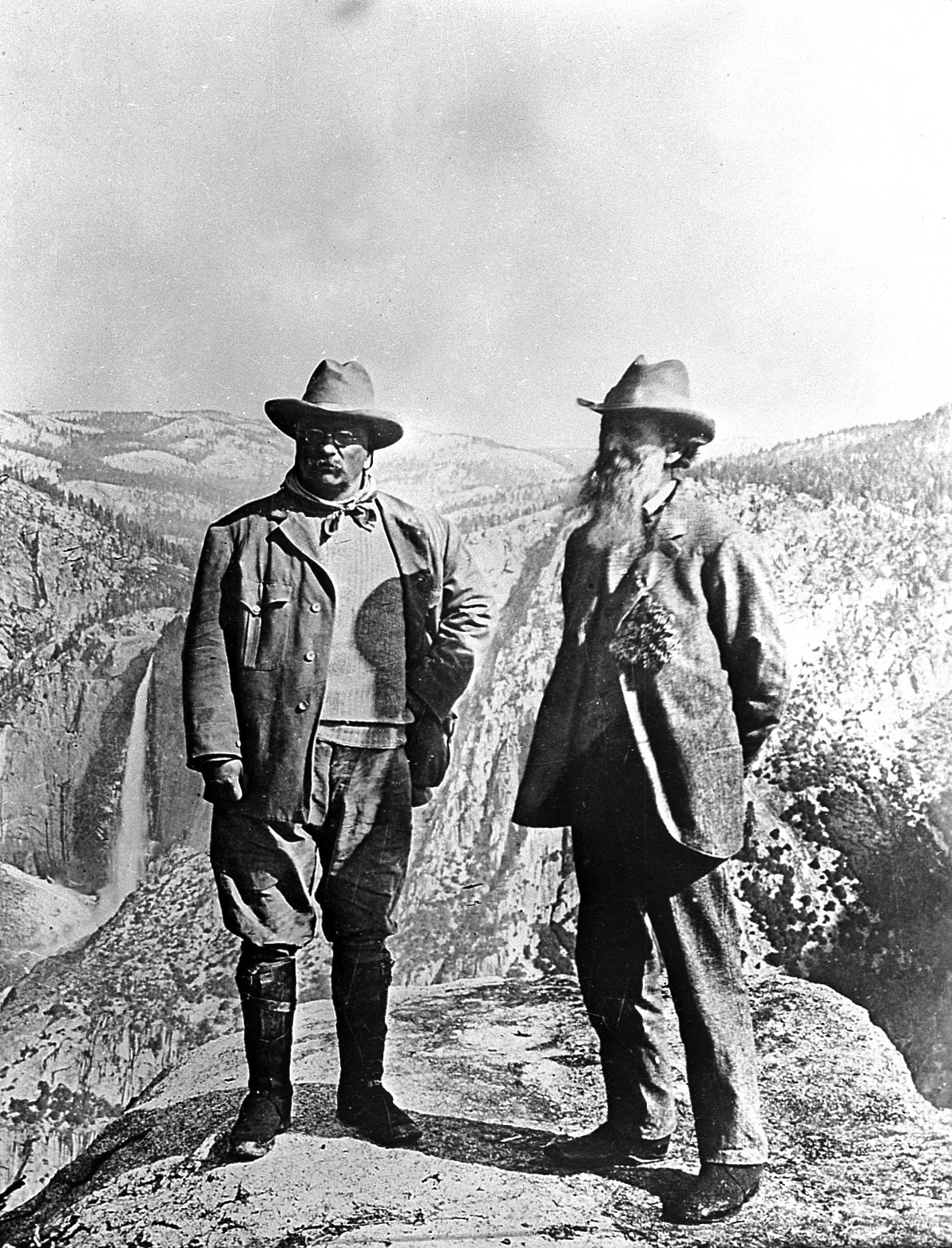
“We have become great because of the lavish use of our resources. But the time has come to inquire seriously what will happen when our forests are gone, when the coal, the iron, the oil, and the gas are exhausted, when the soils have still further impoverished and washed into the streams, polluting the rivers, denuding the fields and obstructing navigation.”
-theodore roosevelt
Roosevelt’s Conservation Legacy
Here are some key aspects of Theodore Roosevelt’s conservation legacy:
- National Parks and Public Lands: Roosevelt recognized the importance of preserving natural landscapes for future generations. During his presidency, he established five national parks, including Crater Lake and Wind Cave, and signed the Antiquities Act into law, which empowered presidents to designate national monuments to protect significant cultural, historical, and natural sites. He used this authority to establish 18 national monuments, including the Grand Canyon. Under his administration, over 230 million acres of public land were set aside for conservation purposes.
- Forest Conservation: Roosevelt believed in the sustainable management of forests and the protection of natural resources. In 1905, he transferred the management of federal forest reserves from the Interior Department to the Agriculture Department, under Gifford Pinchot, a close ally and pioneer in conservation forestry. This move helped establish the United States Forest Service, which focused on responsible forestry practices and conservation of forest resources.
- National Wildlife Refuge System: Roosevelt was an avid hunter and naturalist, but he also recognized the importance of preserving wildlife and their habitats. He played a significant role in expanding the National Wildlife Refuge System, setting aside protected areas to conserve and restore wildlife populations.
- Conservation Diplomacy: Roosevelt’s conservation vision extended beyond U.S. borders. He advocated for wildlife and habitat conservation on the international stage, using diplomacy to establish wildlife sanctuaries, promote responsible hunting practices, and protect natural resources worldwide.
- Conservation Ideology: Roosevelt’s conservation philosophy emphasized the responsible use of natural resources for the public good. He believed in a balanced approach to conservation, one that allowed for economic development while also safeguarding the environment for future generations. His belief in stewardship and active management of resources laid the groundwork for modern conservation practices.
- Legacy in Environmental Awareness: Beyond his tangible contributions to conservation, Roosevelt’s presidency helped raise public awareness about the importance of protecting the environment. He was a passionate advocate for preserving nature’s beauty and resources, inspiring a new generation of conservationists and setting the stage for future environmental movements.
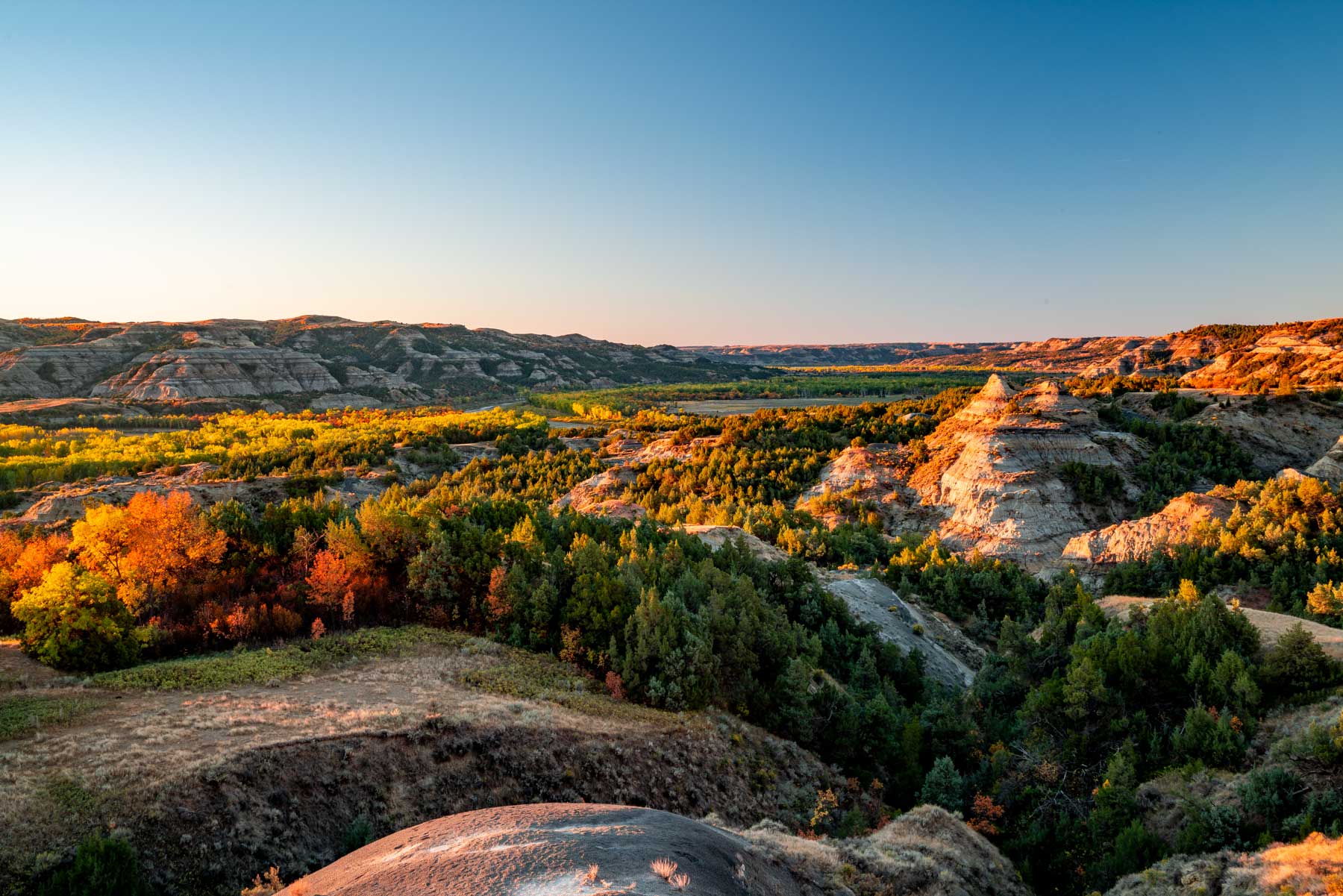
Some Of The National Parks & Monuments Created During TR’s Presidency
- Crater Lake National Park, Oregon (1902) – Established as the fifth national park in the U.S., it features the stunning Crater Lake, the deepest lake in the country formed in a volcanic caldera.
- Wind Cave National Park, South Dakota (1903) – One of the world’s longest and most complex caves, this park protects unique cave formations and a diverse ecosystem.
- Sullys Hill National Park (Now Sullys Hill National Game Preserve), North Dakota (1904) – Though originally designated as a national park, it later became a national game preserve, managed by the U.S. Fish and Wildlife Service.
- Mesa Verde National Park, Colorado (1906) – Preserves and showcases the incredible cliff dwellings and artifacts of the ancestral Puebloan people.
- Platt National Park (Now part of Chickasaw National Recreation Area), Oklahoma (1906) – Originally a national park, it’s now a recreation area managed by the National Park Service, featuring mineral springs and diverse natural landscapes.
- Devils Tower National Monument, Wyoming (1906) – The first designated national monument, it protects the iconic geological feature known as Devils Tower.
- Muir Woods National Monument, California (1908) – Named after conservationist John Muir, it’s known for its old-growth coastal redwood trees.
- Grand Canyon National Monument (Now part of Grand Canyon National Park), Arizona (1908) – Originally designated as a national monument, it later became one of the most famous national parks in the world.
- Pinnacles National Monument (Now Pinnacles National Park), California (1908) – The park features unique rock formations and diverse habitats, known for its condors.
- Jewel Cave National Monument (Now Jewel Cave National Park), South Dakota (1908) – Home to one of the longest known caves in the world.
- National Bison Range (Now part of the National Wildlife Refuge System), Montana (1908) – Though originally established as a national bison range, it later became part of the National Wildlife Refuge System.
- Chaco Canyon National Monument (Now part of Chaco Culture National Historical Park), New Mexico (1907) – Rich in ancient Puebloan ruins and cultural heritage.
- Montezuma Castle National Monument, Arizona (1906) – Preserves cliff dwellings and artifacts of the Sinagua people.
- Natural Bridges National Monument, Utah (1908) – Features natural stone bridges formed by erosion.
- Petrified Forest National Monument (Now part of Petrified Forest National Park), Arizona (1906) – Showcases an incredible collection of petrified wood and ancient fossils.
- Tonto National Monument, Arizona (1907) – Preserves well-preserved cliff dwellings of the Salado culture.
- Cinder Cone National Monument (Now part of Lassen Volcanic National Park), California (1907) – Part of Lassen Volcanic National Park, it features volcanic landscapes.
- Lewis and Clark Cavern National Monument (Now part of Lewis and Clark Caverns State Park), Montana (1908) – Initially a national monument, it’s now a state park. (Source: NPS)
Theodore Roosevelt’s commitment to conservation set an important precedent for future leaders and laid the foundation for many of the environmental protection policies and practices that followed. His efforts helped shape the modern conservation movement and continue to inspire conservationists and policymakers to this day.
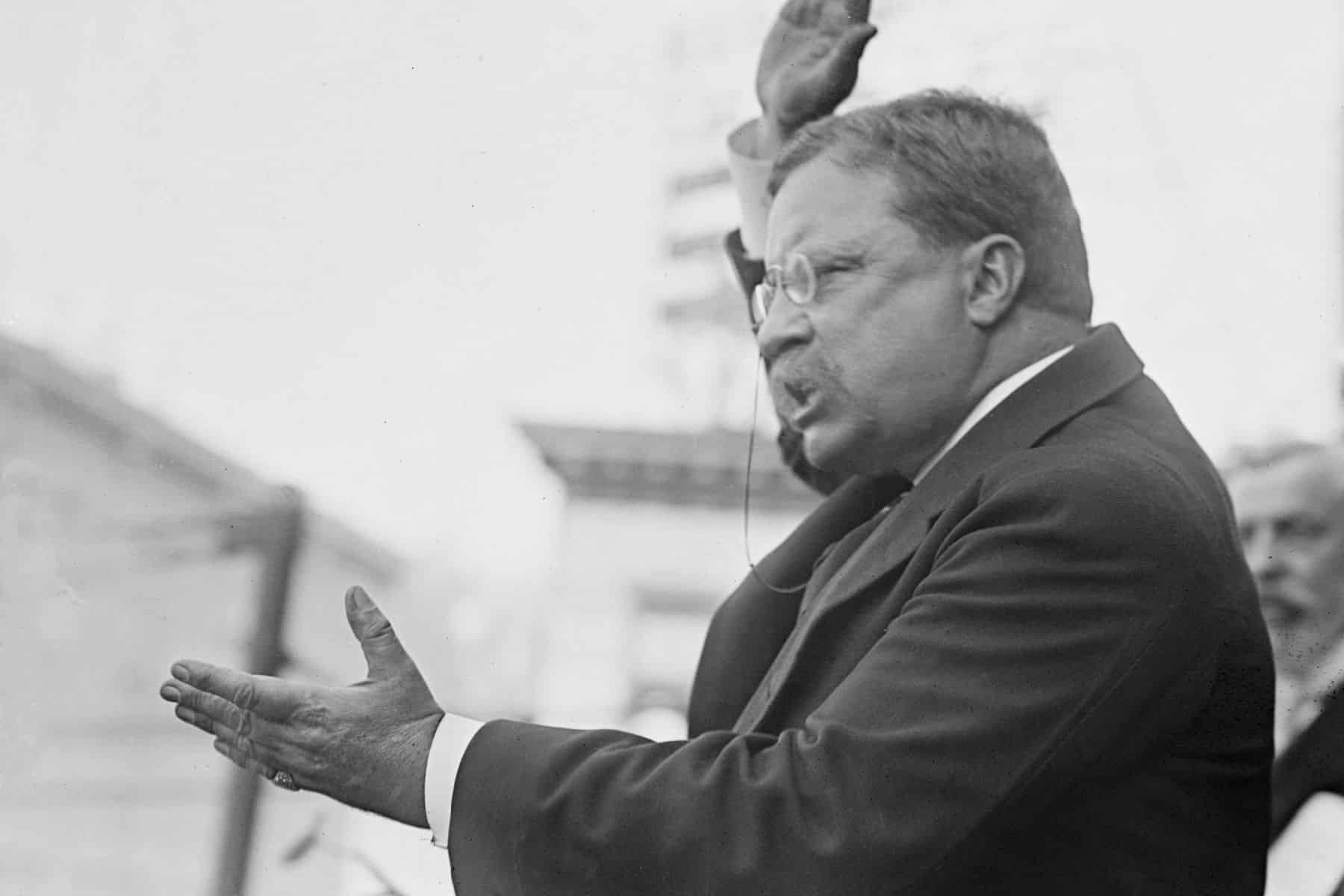
America’s Greatest Conservation President
1. Jimmy Carter
As America’s Greatest Conservation President, More Than Just Parks has selected Jimmy Carter. And, if you want to know all of the reasons why we chose him then you’ll need to check out this article.
President Jimmy Carter’s administration made significant strides in the conservation and protection of wilderness areas, particularly in Alaska. His efforts resulted in the designation of numerous national monuments, the signing of crucial conservation acts, and the protection of vast expanses of land for future generations to enjoy.
In 1978, President Carter designated 15 new national monuments in Alaska. These designations were aimed at safeguarding unique and ecologically significant areas from potential development or exploitation.
Additionally, he signed the Endangered American Wilderness Act, which further reinforced conservation efforts and sought to protect endangered wilderness areas throughout the country.
Even after his presidency, Jimmy Carter remained an active advocate and champion for the protection of wilderness areas, particularly in Alaska. He continued to use his platform and influence to promote conservation and raise awareness about the importance of preserving natural resources and wildlife for future generations.

Carter’s Major Conservation Initiatives
President Carter was a strong advocate for environmental protection and worked to advance several significant conservation initiatives:
- Alaska National Interest Lands Conservation Act (ANILCA): One of Carter’s most significant conservation achievements was signing the Alaska National Interest Lands Conservation Act into law in 1980. This landmark legislation expanded the protected areas in Alaska, adding more than 157 million acres to the national park and refuge systems. It established new national parks, preserves, wildlife refuges, and designated wilderness areas, preserving vast stretches of pristine wilderness and protecting critical habitats for wildlife.
- Superfund Program: Under Carter’s administration, the Comprehensive Environmental Response, Compensation, and Liability Act (CERCLA), commonly known as the Superfund, was passed in 1980. This law provided a mechanism and funding to address hazardous waste sites and clean up environmental contamination. The Superfund program has since played a crucial role in remedying polluted sites across the country.
- Carter’s Conservation Ethos: President Carter’s personal commitment to conservation and environmental protection was evident during his time in office. He embraced sustainable practices at the White House, installing solar panels and advocating for energy efficiency. His administration focused on promoting renewable energy sources and reducing dependence on fossil fuels, with Carter emphasizing the importance of addressing the nation’s energy and environmental challenges.
- Public Land Protections: Carter took steps to protect public lands and natural resources by establishing new national monuments and expanding existing ones. He designated the Monongahela National Forest in West Virginia as a national monument and expanded the North Cascades National Park in Washington state.
- International Conservation: Carter’s conservation efforts extended beyond the United States. He supported international conservation initiatives and played a crucial role in the signing of the Antarctic Conservation Act, which aimed to protect the fragile and unique environment of Antarctica.
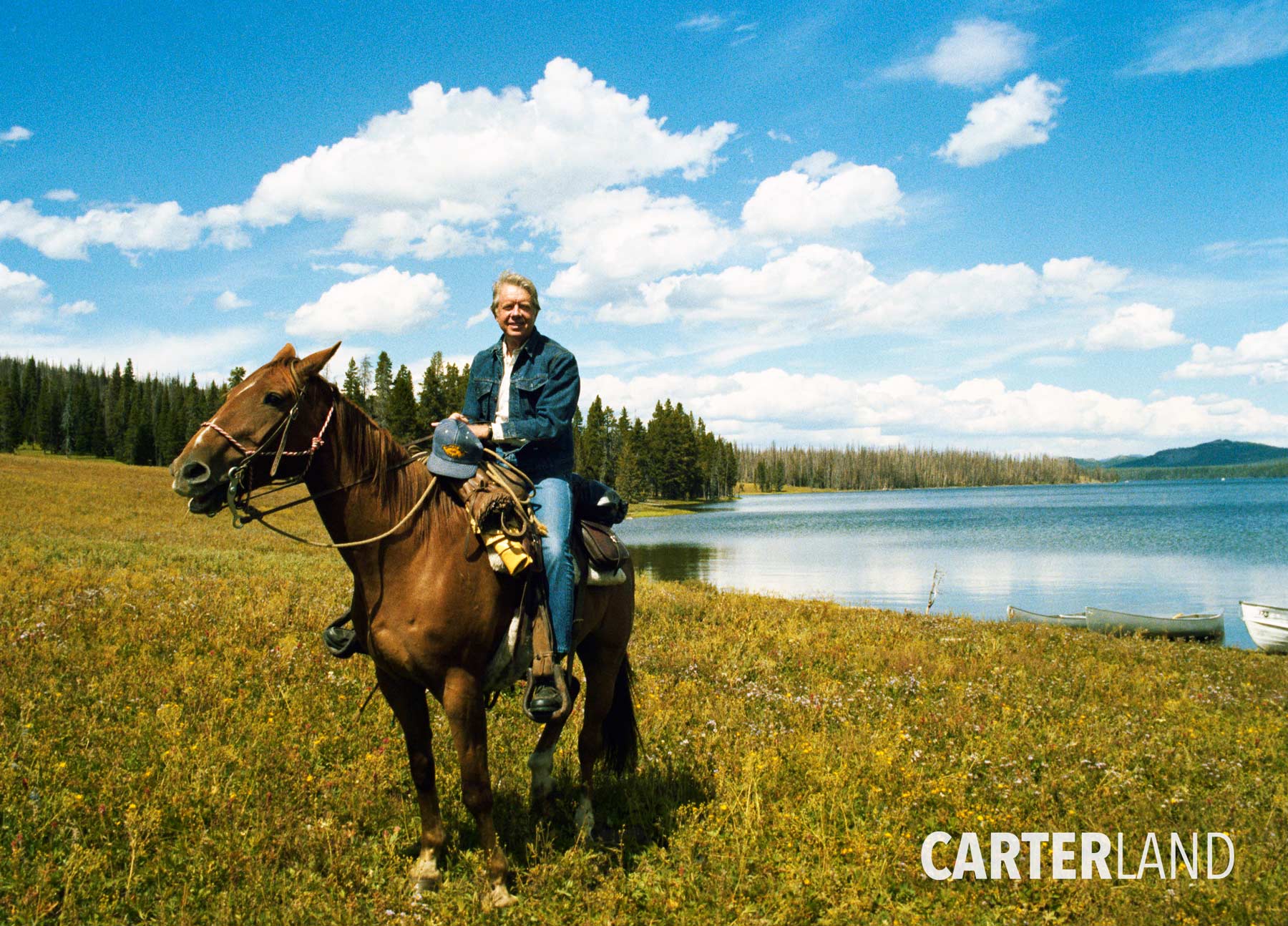
A Life Dedicated To Conservation
Best selling author and historian Douglas Brinkley, who has authored books examining both Theodore & Franklin Roosevelt’s leadership in the field of conservation and is prominently featured in the documentary, CARTERLAND, makes the case that Carter’s own legacy is a work in progress which will continue to grow over time.
“We still haven’t caught up with how large Carter’s environmental legacy is, but in the 21st century or the 22nd century, it’s going to be a much larger achievement because we would not have been able to save Alaska wilderness if it wasn’t for Jimmy Carter,” notes Brinkley.
“I want to make it clear,if there is ever a conflict (between environmental quality and economic growth), I will go for beauty, clean air, water, and landscape.”
-President jimmy carter
The First Administration To Understand The Threat Posed By Climate Change
As The Guardian reported, a few days after the Independence Day celebrations on July 4, 1977, a memo landed on the President’s desk which had the ominous title “Release of Fossil CO2 and the Possibility of a Catastrophic Climate Change.”
Carter seems to have heeded this warning, and, while he did not make sufficient progress on the climate crisis given his single term in office, he did sign significant pieces of environmental legislation, including initiating the first federal toxic waste cleanups and creating the first fuel economy standards.
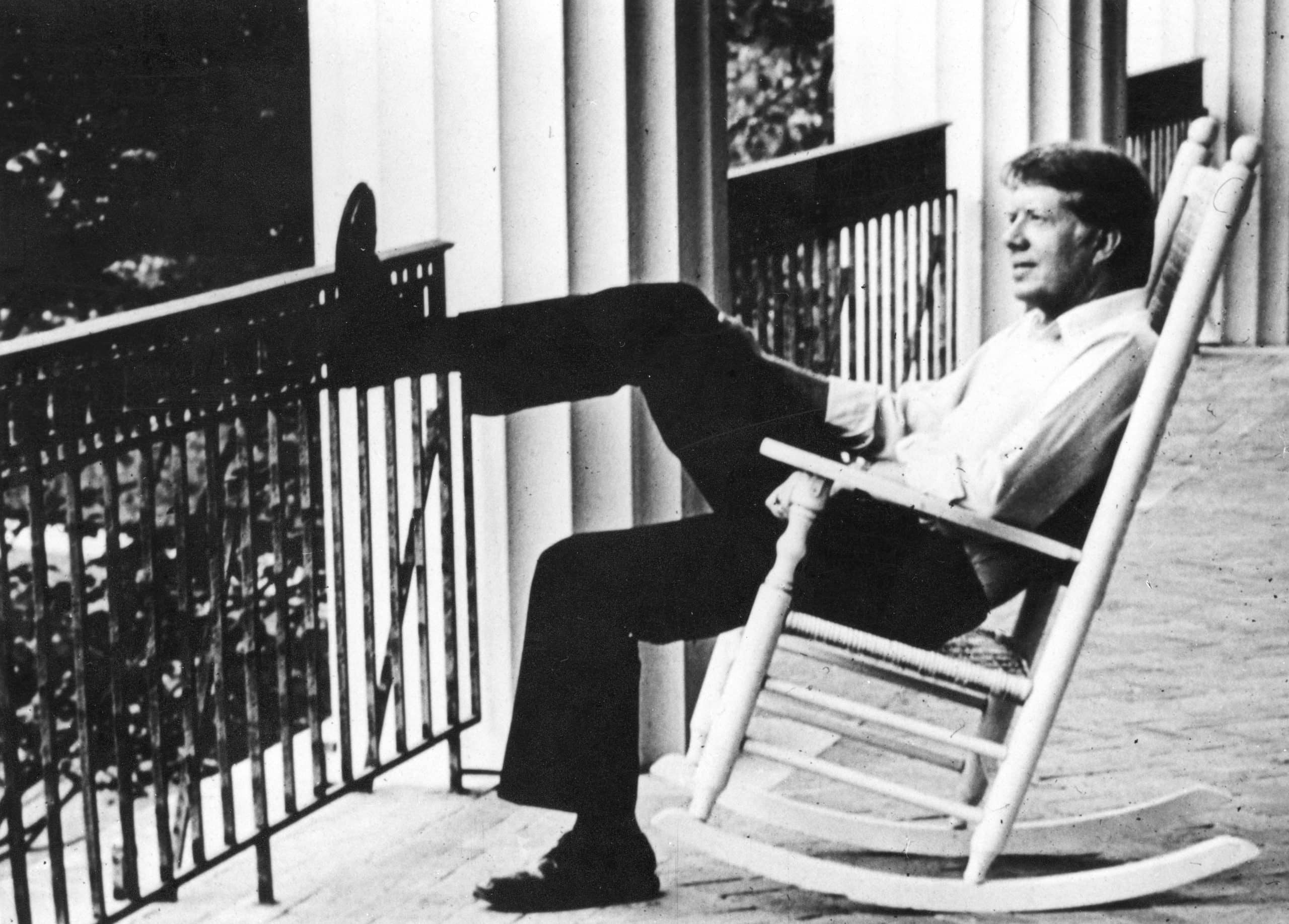
The First Leader To Acknowledge The Seriousness Of Climate Change At The Presidential Level
Gus Speth, who was the co-founder of the Natural Resources Defense Council, also served as Jimmy Carter’s Council on Environmental Quality Chairman.
Speth, who appears in CARTERLAND, notes that “Carter was really the first one to acknowledge the seriousness of the climate threat at the presidential level.”
Speth goes on to state that President Carter was the first leader to tackle this important issue by providing a comprehensive assessment of the challenges confronting humankind.
“We asked the President to do a big report on what the country might look like in the year 2000, twenty years down the road, if we didn’t respond to global scale challenges in environment and resources and population.”
“So it took us much of the administration to do it, but we finally produced what became known as the Global 2000 Report. In 1980, we released the Global 2000 Report and it was an eyeopener and it really gave birth to this international environmental agenda.”

The Difference Jimmy Carter Could Have Made Is The Difference
Given Carter’s visionary leadership in the area of climate change, Rose Marcario contends that, “If we had kept innovating we would have solved the crime climate crisis already.“
“We would have solved the crisis already if we’d continued along the path that President Carter had. I don’t think you could say that about any other president.”
Jonathan Jarvis, Director of the National Park Service under President Obama, concurs adding, “You know if Carter’s policies had been adhered to since [1980] then we wouldn’t be having a climate crisis right now.“
“We would already have converted substantially to renewables and kept a lot of the stuff in the ground and that message is as relevant today, maybe even more relevant today than it was then.”
Looking back over forty years ago, we can now see that what was on the ballot in 1980 was climate change and whether we, as a nation, would take concrete actions to halt its destructive effects.
Why Carter Stands Above The Rest
The difference Carter could have made as we find ourselves grappling with the adverse effects of climate change over forty years later is the reason why he stands above all of the rest – including Theodore Roosevelt.
As best-selling author and Schumann Distinguished Scholar in Environmental Studies at Middlebury College Bill McKibben notes, “Imagine if we’d followed Carter’s lead and actually done the work to make sure that by 2000 the United States was running on 20 percent solar energy.“
“It would have been hard as hell–hard as the Apollo Project, or the Manhattan Project that Carter referenced when he made his proposal. But the technological breakthroughs that came in the 2010s would have come in the 1990s–in time for China to adopt them as it began its rapid acceleration.“
“Our use of fossil fuels would have peaked decades ago and the rest of the world would have followed in train. The carbon curve would have bent decades earlier.”
Despite serving a single term, Jimmy Carter ranks as one of the most consequential U.S. presidents when it comes to environmentalism, according to historians, conservationists and several former federal officials.
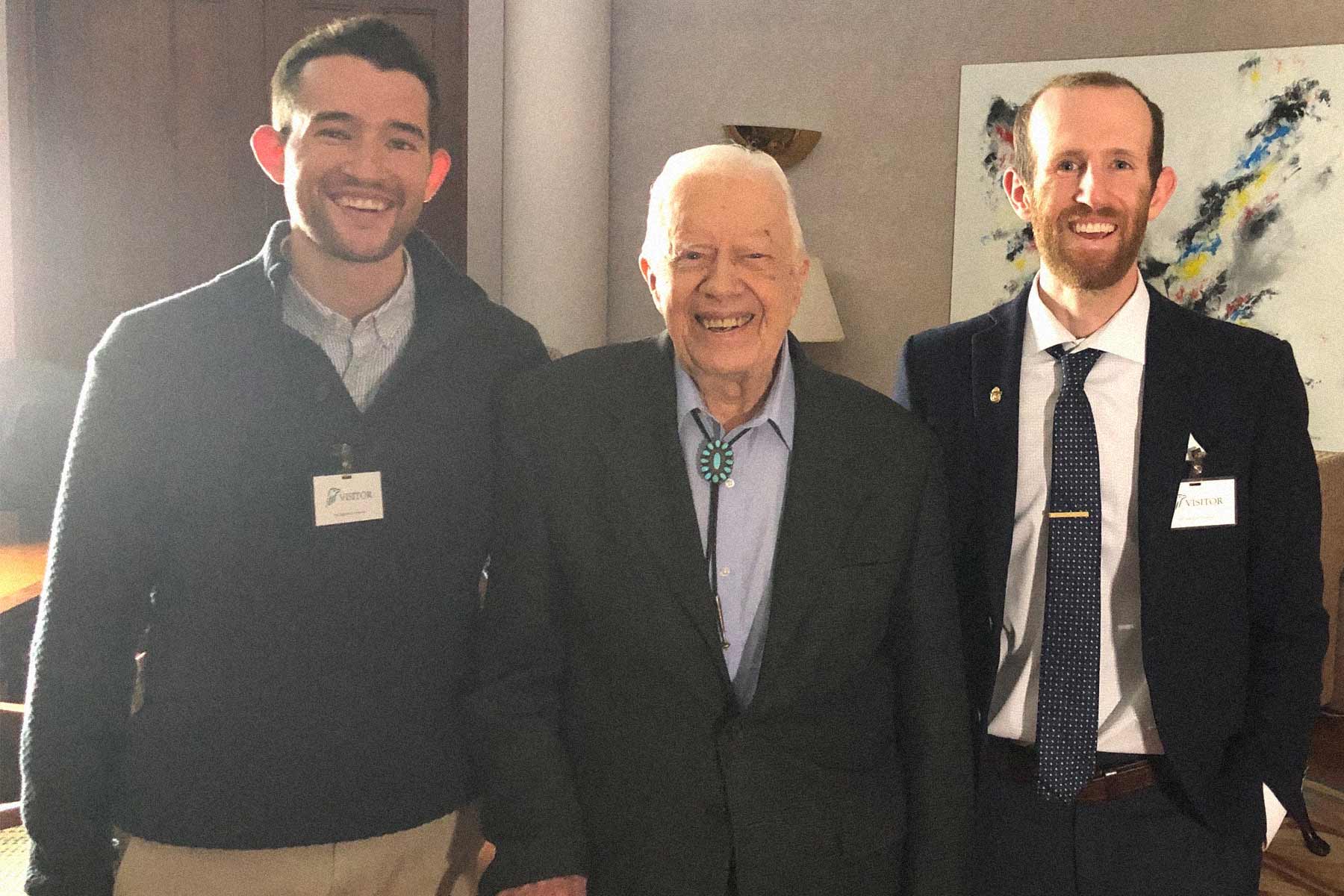
Check Out: 14 Reasons Why Jimmy Carter Is America’s Greenest President
List of Greatest Conservation Presidents
- Jimmy Carter
- Theodore Roosevelt
- Franklin Roosevelt
- Richard Nixon
- Lyndon Johnson
- Barack Obama
- John F Kennedy
- Woodrow Wilson
- Bill Clinton
- Ulysses S Grant
About The People Behind More Than Just Parks
We’re Jim Pattiz and Will Pattiz, collectively known as the Pattiz Brothers (and sometimes as the “Parks Brothers”).
You should probably know that we don’t just make this stuff up out of thin air. We absolutely LOVE America’s public lands and have spent our entire adult lives bringing these places to life through our amazing short films.
We’ve worked with the National Park Service, the Department of Interior, USDA, U.S. Forest Service, and more for years creating films on important places and issues. Our work has been featured in leading publications all over the world and even some people outside of our immediate family call us experts on the national parks.
And, in 2018, our father – having spent a lifetime teaching history – joined us so that he could help us to tell the incredible stories behind these amazing places.
We Hope You’ll Follow Our Journey

Our goal here at More Than Just Parks is to share the beauty of America’s national parks and public lands through stunning short films in an effort to get Americans and the world to see the true value in land conservation.
We hope you’ll follow our journey through the parks and help us to keep them the incredible places that they are. If you’re interested in joining the adventure then please sign up below!
Helpful Related Articles
- Meet The Real Life Batman & Robin Of The National Parks
- No, Theodore Roosevelt Was Not the Greatest Conservationist President. It Was This Guy.
- A Woman Started the Modern Environmental Movement (Can It Continue?)
- America’s First Environmental Activist
- George Perkins Marsh – The Father Of Climate Change
- 10+ AMAZING John Muir Facts – America’s Greatest Conservationist
- How Jacques Cousteau’s Undersea World Changed Ours
- Hetch Hetchy: The Epic Environmental Battle That Changed America
- Is It Time For Another Bipartisan Era Of Environmental Activism?
- 14 Reasons Why Jimmy Carter Is America’s Greenest President
- America’s First Forester
- The Environmental First Lady
- The First Green New Deal Happened Nearly 100 Years Ago – What Happened?
- Whose Island Is It Anyway | A History & Guide To Cumberland Island
- Protecting the Environment Used to Be Bipartisan. What Happened?
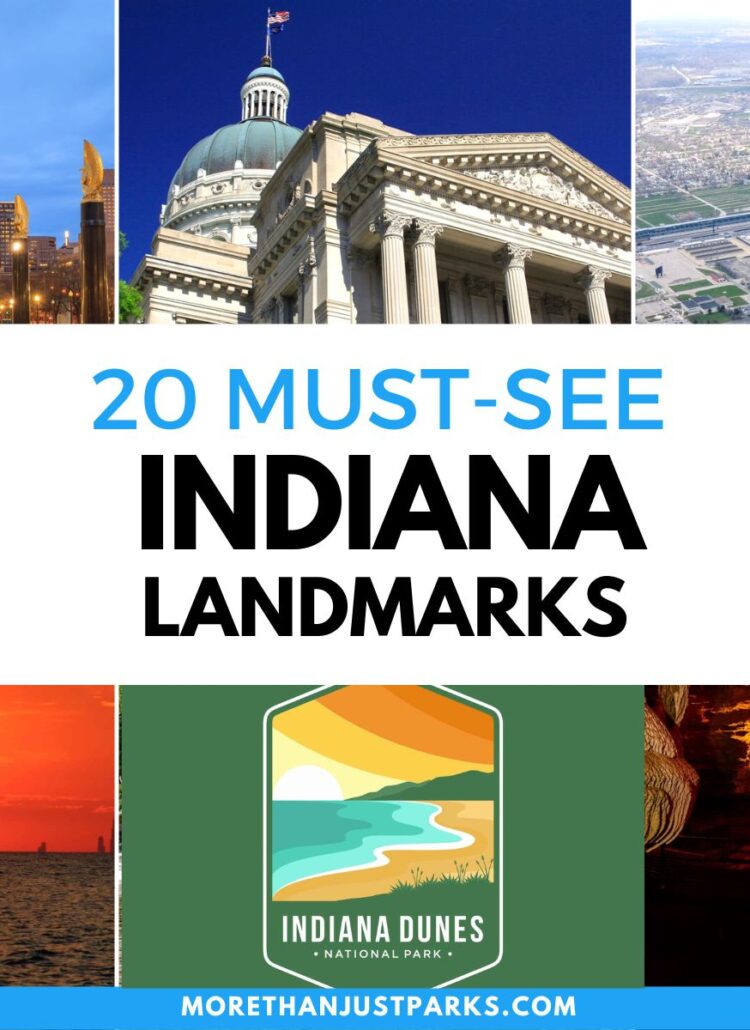
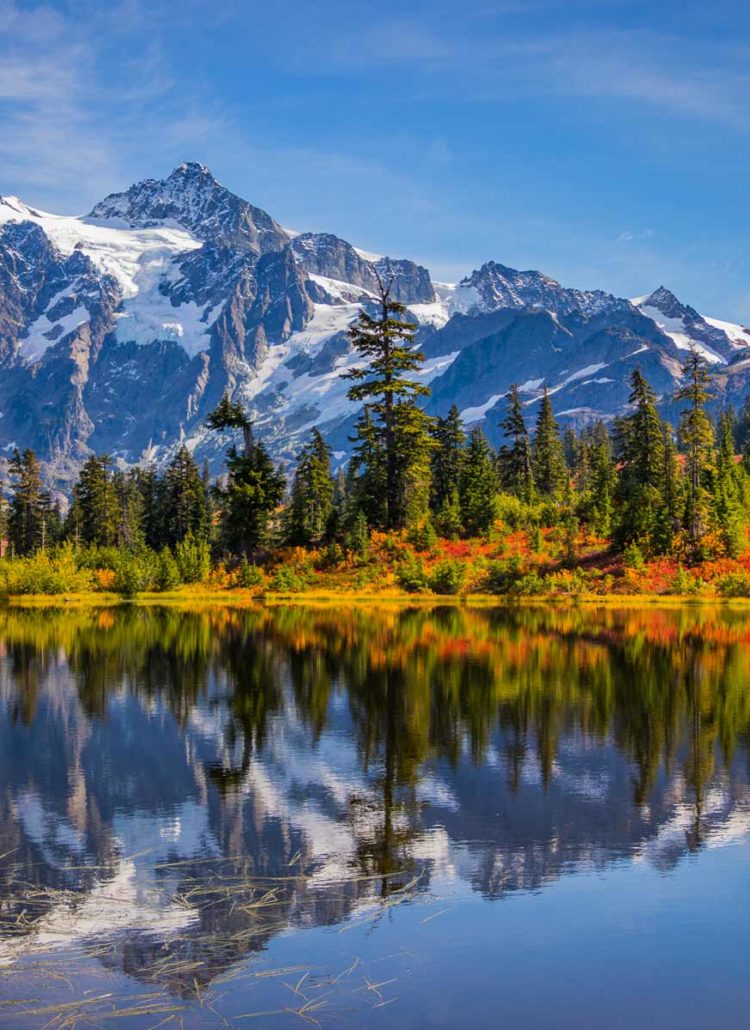
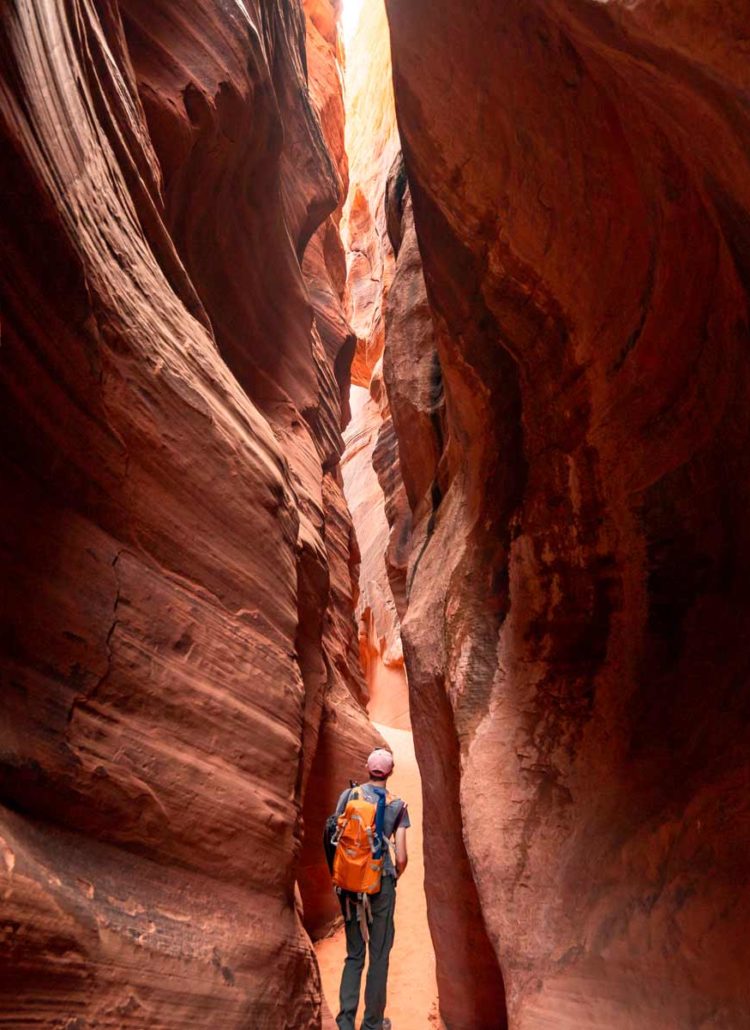
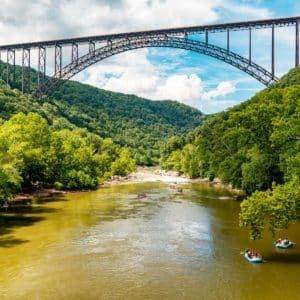

Leave a Reply